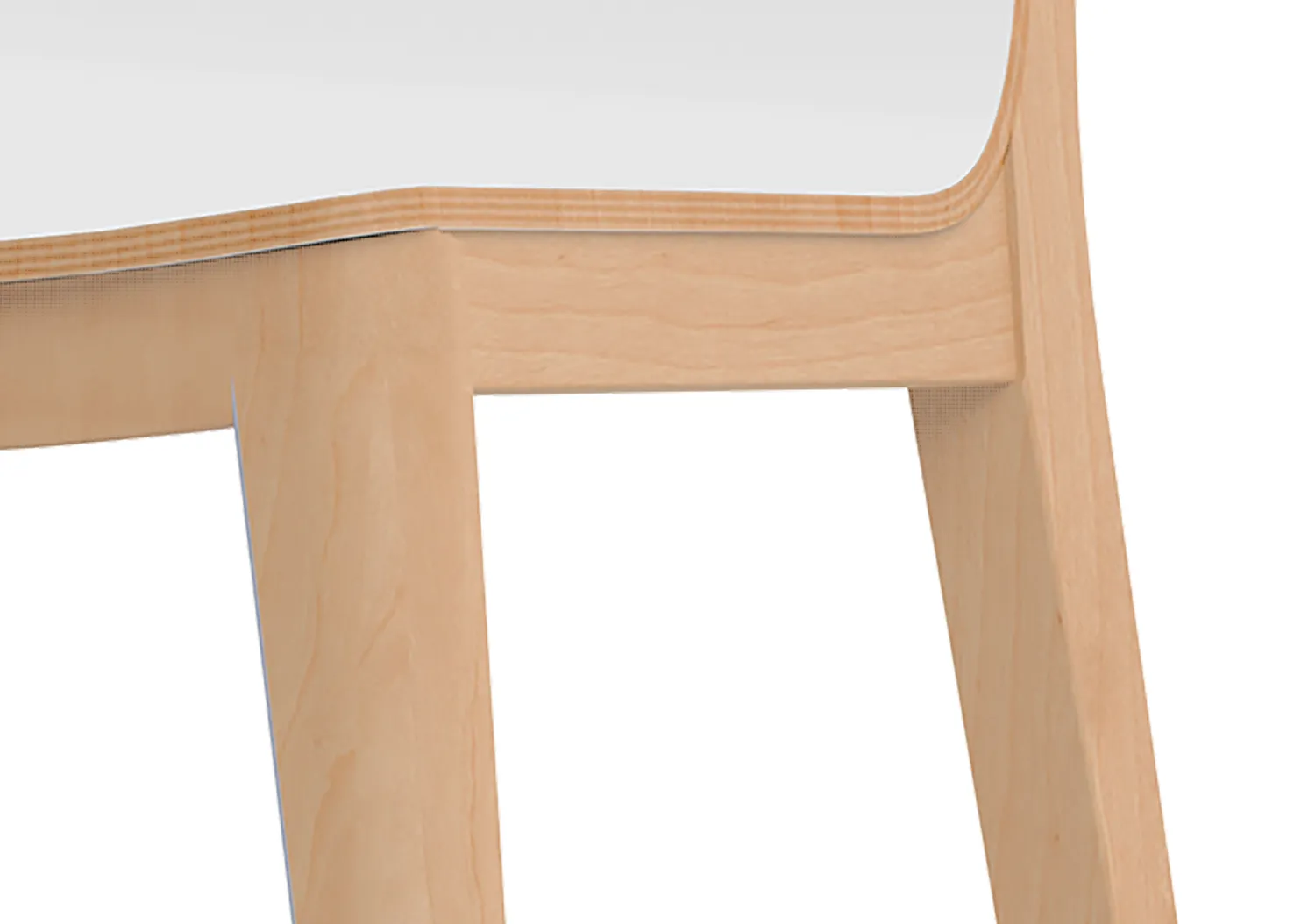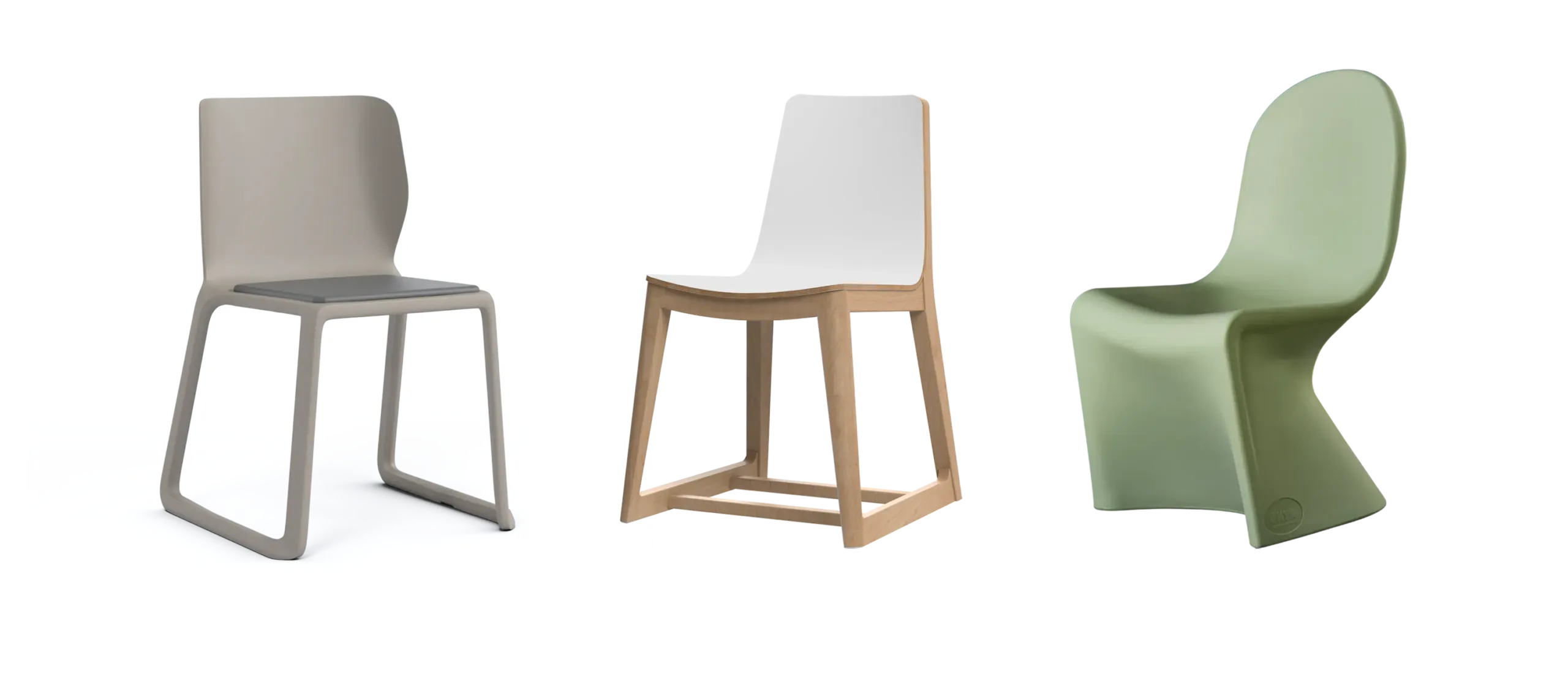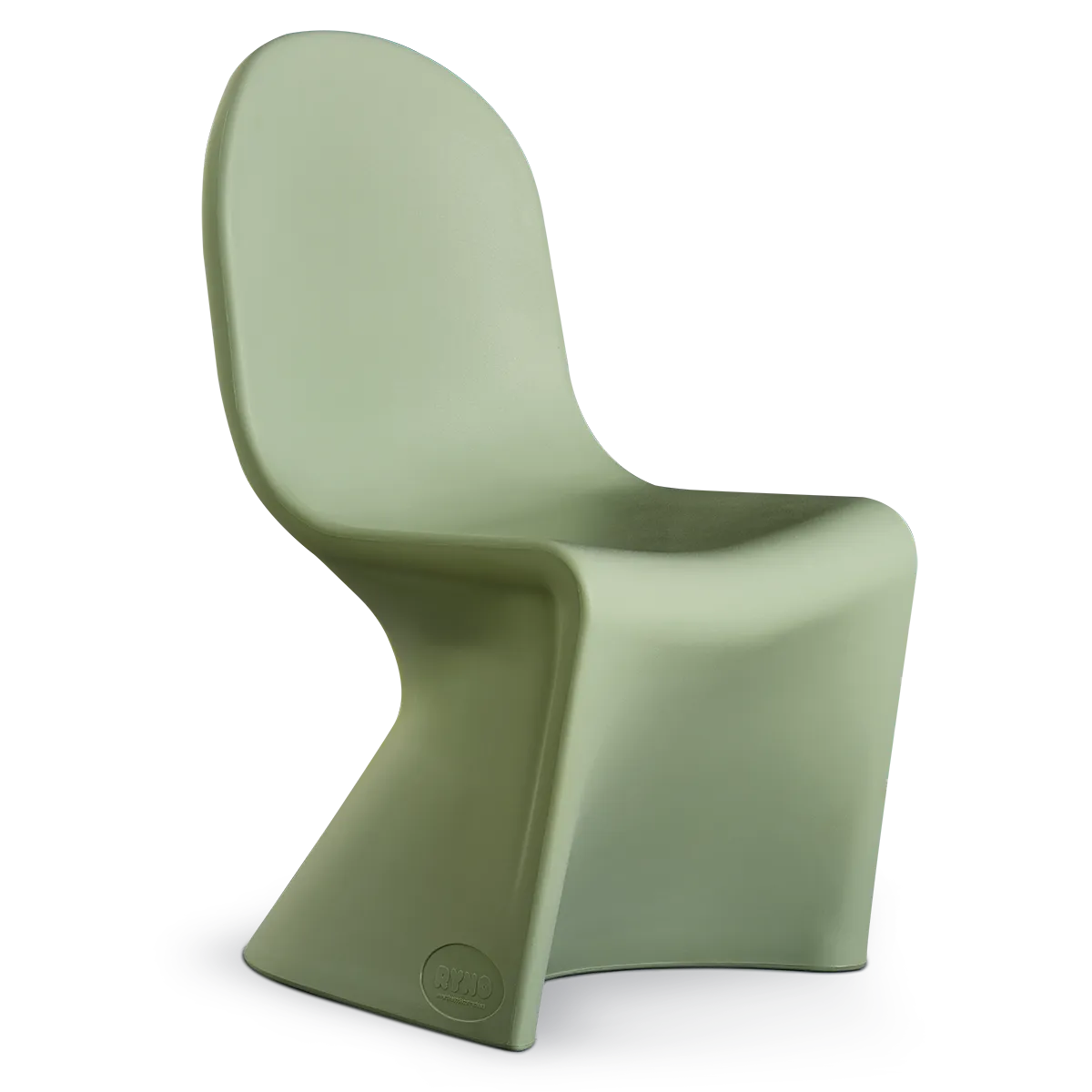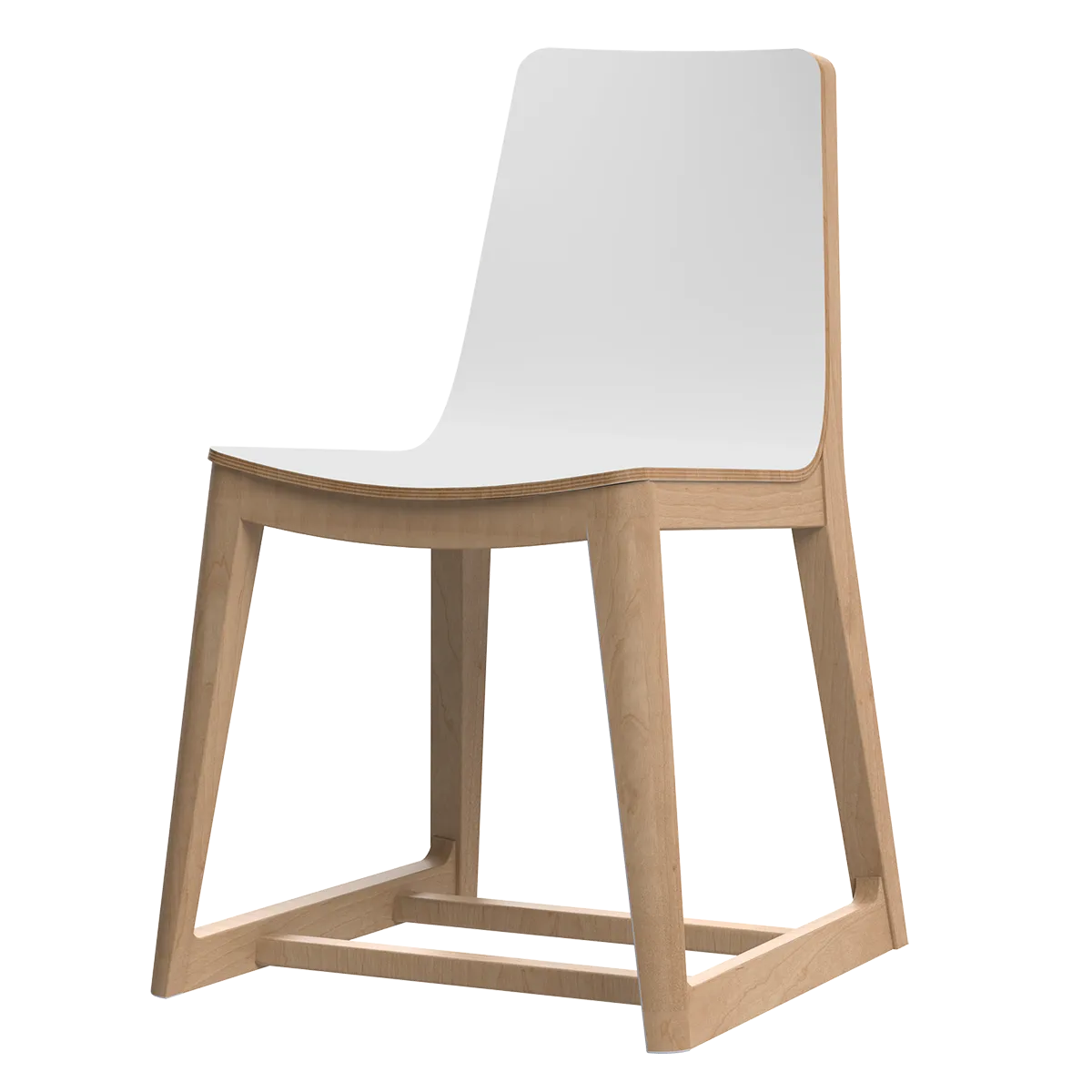Guide:
Choosing the right chair for challenging interior environments
This guide provides information to consider when selecting a chair that meets the specific conditions and requirements in challenging and extra-challenging settings.
Design for real safety needs
All Healsafe Interiör furniture and products are, through their specific design, shape, materials and construction, designed to meet explicit and implicit real safety needs in institutional care. This includes preventing and hindering self-harm (e.g., cutting, suicide attempts, swallowing), the creation of improvised weapons, cutting and stabbing tools, or the hiding of drugs, weapons, and food. They are designed to prevent furniture or interior products from being thrown or broken and thereby causing physical or material damage to interiors, windows, door frames, and similar structures.
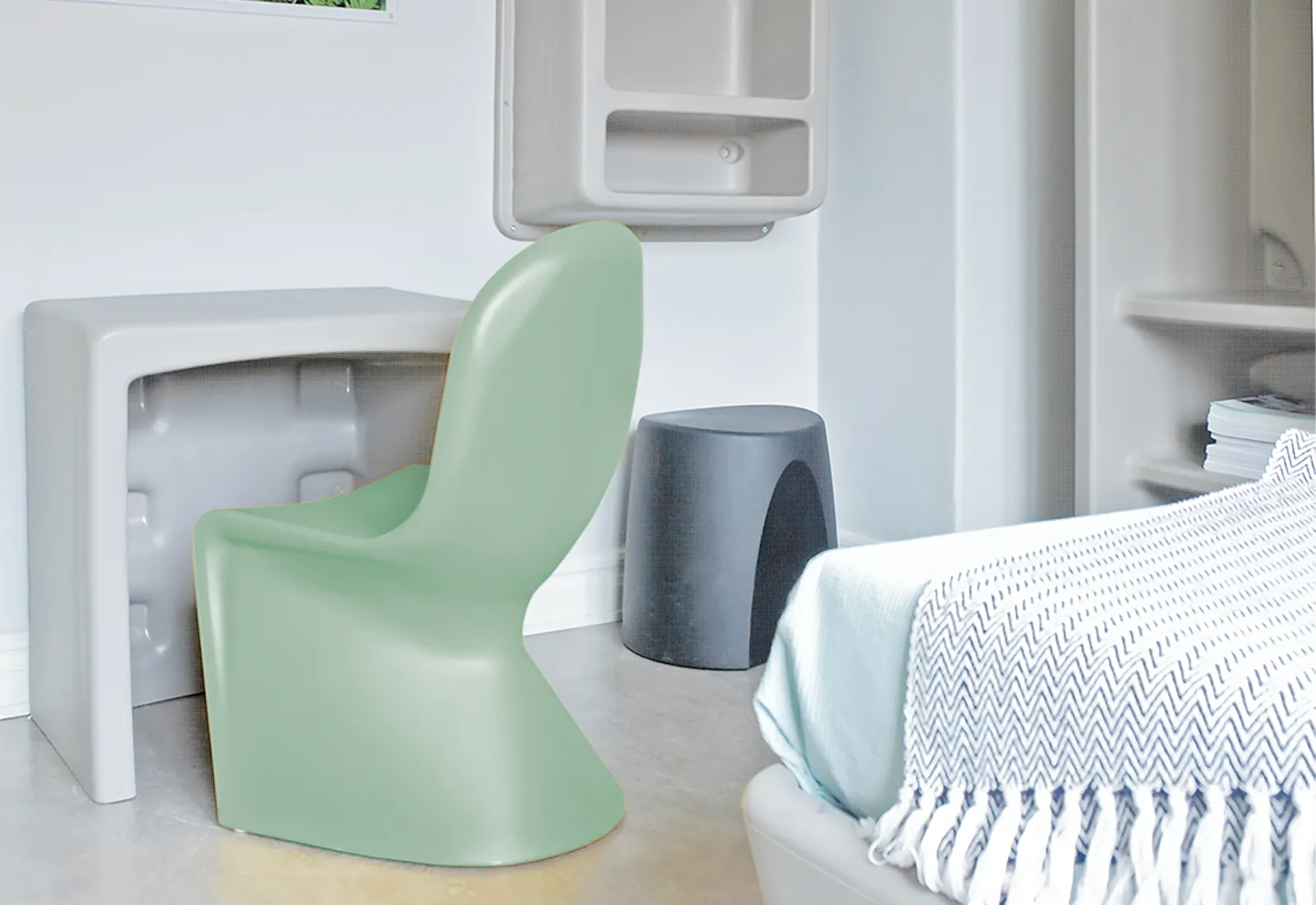
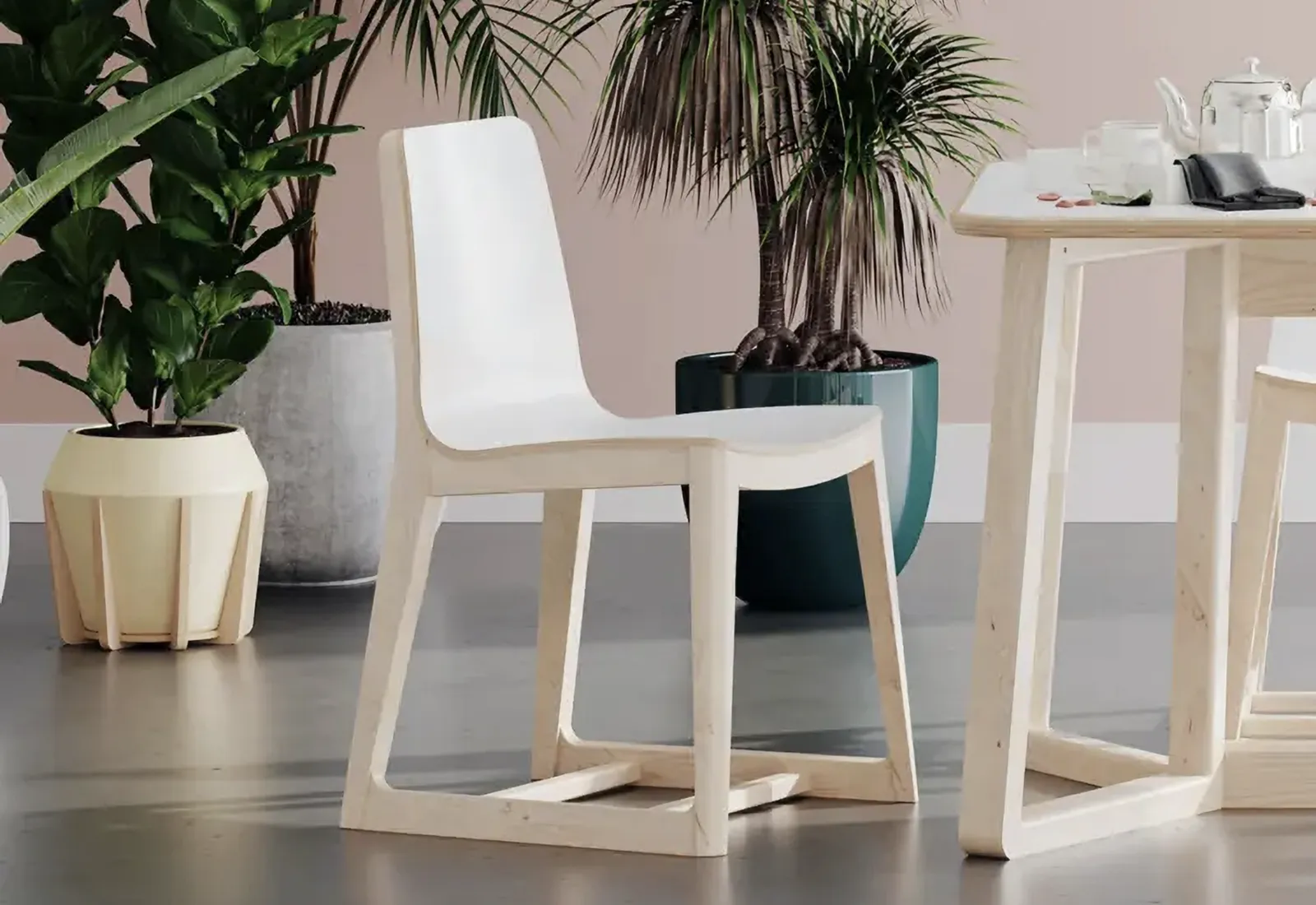
“Regular” chairs vs chairs designed for safety
“Regular” chairs are not designed to withstand significant violence. Furniture parts that can be broken or detached pose a risk of self-harm, damaged interiors, and threats and violence against others. “Regular” chairs often have a molded seat/backrest mounted on a metal frame. These parts can be separated and used as weapons. Even chairs made entirely of molded parts can be broken to create sharp weapons. “Regular” chairs have a design, material, and construction intended for other types of stress and are often tested for “normal use” in public environments. Unfortunately, there are no tests for furniture and products for institutional care with specific safety requirements, which is why, for example, “Product info” is not relevant for environments with particular safety considerations.
Joining techniques for different purposes
There are different types of joints. They can either be metal fittings or assembly with dowels (loose or fixed). The strongest assembly is achieved with glued fixed dowels. Metal fittings wear down over time as they erode the softer wood material, or they cause cracks in the wood under heavy force. A chair leg rarely breaks unless the manufacturing material is of technically low quality, such as wood with cracks or knots. “Regular” wooden chairs are never stronger than their joints, that is, where the parts meet. The joint between the back legs and the apron is usually the first to give way, for example, if one leans back on the chair. A chair with four legs can be used as an improvised weapon to a greater extent than a chair with a solid base.
